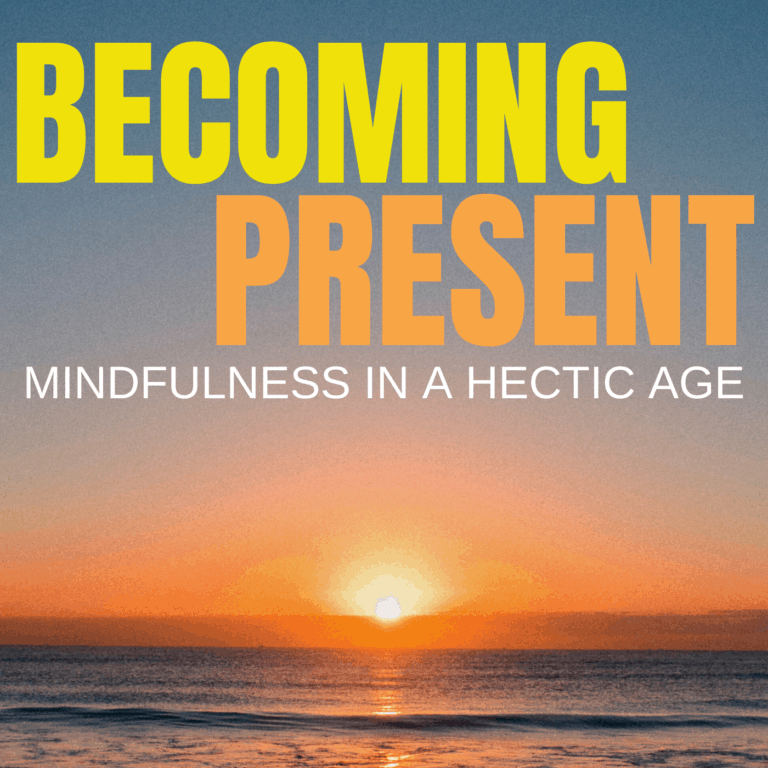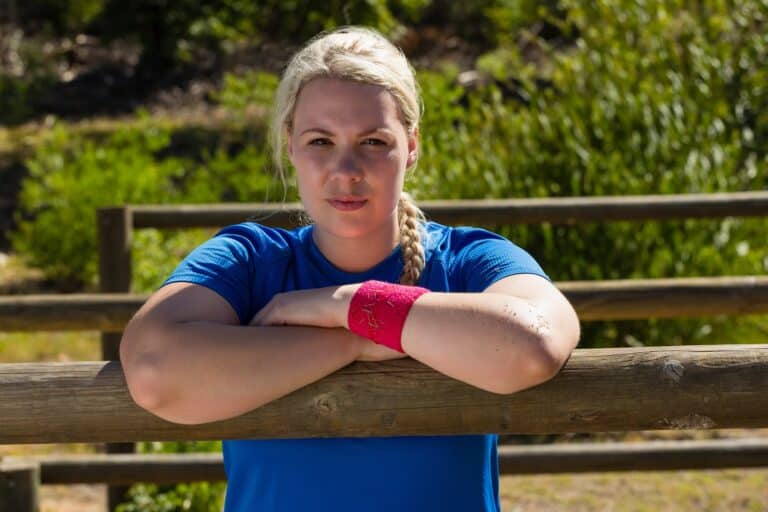Why is it Important to Set Realistic Goals?
Many of us are used to the idea of goal setting and planning. Goal setting is a future-focused activity that equips us to turn our dreams into reality. In this article, we will take a deep dive into effective goal setting, with a focus on how realistic goal setting can increase our chance of achieving what we set out to. We will explore the central question of why is it important to set realistic goals? And we’ll cover some relevant and targeted advice to support you in effective goal setting today.
Overcoming Limiting Beliefs

“Everything you do is based on the choices you make. It’s not your parents, your past relationships, your job, the economy, the weather, an argument or your age that is to blame. You and only you are responsible for every decision and choice you make. Period.” ―Wayne Dyer
Claire Law | January 17, 2021
Setting realistic goals can make the difference.
Perhaps you’ve dreamed of finally getting down to writing that novel or memoir one day. Maybe you continue to entertain thoughts of someday traveling to distant lands and exploring a bit more of the globe.
And you may have even promised your partner that “eventually” you plan to take early retirement. Running a marathon? Learning to fly? Completing further education?
These are all dreams and even goals that help you to structure and plan for the future. Yet, all too often, they remain in the “one-day” category.
Vague future hopes and dreams that have not yet been formulated as realistic goals. As such, they are less likely to come to fruition, less likely to move from the dream sphere into reality.
In contrast, well-formed realistic goals help us to focus on proactive steps towards accomplishing what we desire in life.
That’s why setting realistic goals can make a difference.
There is a particular knack for setting essential realistic goals, and that begins with understanding the why: why is it important to set realistic goals?
The work of Simon Sinek is helpful here. Sinek’s 2009 best selling book, “Start with Why” encourages us to postpone considering the “how?” and the “what?” of any particular challenge and instead start with the “why?” questions that drill down into our motivation and philosophy that will drive us as we eventually begin to act.
Sinek’s views are popular: his TED Talk, How Great Leaders Inspire Action, is the third most popular TED Talk ever.
Sinek’s message is clear setting realistic goals begins with understanding why we want to achieve that goal in the first place? Why it matters?
What is it about a particular goal or dream that exercises some pull on us? Without this, any goal lacks depth or substance.
Such goals will merely focus on outward behavior and, as such, miss out on the powerful influence that our psychology exerts over our own behaviors. Continued…

eBook

Audio eBook

eBook
Three personal growth tools for you as a gift for visiting 1VibrantLife.com
Know Thyself when setting goals
When it comes to realistic goal setting, the Ancient Greek aphorism, “Know Thyself” rings true. Gaining a sense of your own “why” is a fantastic place to start when goal setting.
Knowing your motivation and desires can help you to tailor any goal to your situation. Such tailor-made goals are most likely to feel a secure fit for you and your own life and be realistic within your own worldview and life outlook.
So, when it comes to realistic goal-setting, start with a sense of your own “why?” At this stage, your goal is likely to remain large, loose, and unspecific. You will be able to tighten up your goal after this initial stage by focusing on the “how” and the “what.”
However, to begin with, the “why?” begins to help you secure your motivation that will eventually contribute to the formation of a realistic goal.
The following questions could prove helpful when determining your own sense of “why?
- If you achieved your dream, what would that mean to you?
- How would this goal align with your values?
- What qualities do you hope people admire in you? How does this dream align with these qualities?
“If one advances confidently in the direction of his dreams, and endeavors to live the life which he has imagined, he will meet with a success unexpected in common hours.”
~ Henry David Thoreau 1817 – 1862 Success Quotes
Setting Realistic Goals
Having established a sense of the “why?” in relation to your dream or goal, it’s time to begin shaping and honing your sense of what you’d like to achieve into a realistic goal.
There is plenty of evidence for the efficacy of specific and clearly formed goals. For example, research from the management sector establishes the positive relationship between well-defined goals and performance at the individual, group, and organizational levels.
And in the educational sector, research has shown that teaching students to set realistic goals can positively impact attainment. It makes sense, then, to hone and develop our initial goal of focus into a well-crafted and explicitly stated realistic goal.
There are various frameworks that can be useful strategies during this honing process.
While the strategies differ, they all share a common focus on taking something vague and without clear form and then transforming that into agile, precise, well-set boundaries.
Let’s consider three such strategies for realistic goal setting.
The GROW Model
The GROW model (or process) is a simple method for goal setting and problem-solving. It was developed in the United Kingdom by business coaches Graham Alexander, Alan Fine, and Sir John Whitmore and has been used extensively in corporate coaching.
It uses the acronym of GROW to help a person think through the various stages of goal formation. The acronym is as follows:
Goal:
The goal is the endpoint, where you want to be. What would it look like if the problem was solved? The goal has to be defined in such a way that it is very clear when they have achieved it
Reality:
The current reality is where you are now. What are the issues, the challenges, how far are you away from the goal? How does your current reality impact the goal?
Obstacles/Options:
There will be obstacles stopping you from getting from where you are now to where you want to go. Once obstacles are identified, you can find ways of dealing with them. These are the options. Realistic goal setting factors in such obstacles and options.
Way Forward:
The options then need to be converted into action steps and plans which will take you to your goal. These plans are the way forward and will involve being specific.

Only $7.99
Limited Time Offer
Plus Two FREE Bonus Ebooks
Boost Your Self-Confidence, Self-Esteem, And Self-Image By Identifying And Overcoming Limiting Beliefs
✅ Build More Confidence
✅ Create Fulfilling Relationships
✅ Increase Your Self-Esteem
✅ Renew A Passion For Life
✅ Improve Sense Of Well-Being
✅ Turn Self-Doubt into Self-Belief
✅ Reduce Worry, Stress, Anxiety

The SMART Model
A second model for realistic goal setting is the commonly used SMART model.
Like the GROW model, SMART uses an acronym to set out considerations that are central to realistic goal setting.
The SMART model is usually first attributed to George Doran (1991). The SMART model suggests realistic goals incorporate the following:
Specific:
Clearly state a specific area for improvement.
Measurable:
Quantify an indicator of progress.
Assignable:
Clarity around who will do it.
Realistic:
State what results can realistically be achieved with the time and resources available.
Time-related:
State what the timeframe is in which the goal can be achieved.
Neuro-Linguistic Programming (NLP), Using The POSSE Acronym.
And the final model considered here comes from Neuro-Linguistic Programming (NLP). Originally developed by Richard Bandler and John Grinder in the 1970s, NLP forces on achieving personal goals through communication, personal development, and psychotherapy techniques.
The NLP Method to realistic goal setting focuses on the creation of well-formed outcomes, and creating a well-formed outcome results from using the POSSE acronym:
Positive:
Use positive language to express your goal or outcome. State what it is you want to achieve rather than what you don’t want to maximize motivation.
Own Part:
Focus on what you will take responsibility for as you commit to any goal. There are bound to be setbacks in life. However, what can you be proactive about doing to realistically support your quest to achieve?
Specific:
Ensure you are clear, precise, and specific in wording the goal. Think where? When? What? Who? How?
Size:
Any realistic goal needs to be large enough to feel exciting but small enough to be manageable if it is to be realistic.
Evidence:
Consider how you will know when you have achieved the outcome or goal?
What evidence will you look for? How might you feel? What will you see? Hear?
NLP uses sensory information to help motivate us towards success.
You can visualize what you expect success to look, sound, and feel like to help you be clear on what it is you want to achieve and how you will know when you have achieved this.
Ecology:
Consider the environment and situation you are in and how that might impact your goal. Realistic goals need to accommodate the situation or the ecology around you.
Using the POSSE acronym can help you create well-formed goals that are specific, clear, and realistic.

Realistic Goal Setting in Practice.
Some real-life examples are helpful when it comes to contemplating how you can begin to put realistic goal setting into practice.
Let’s consider how realistic goal setting looks in a given scenario.
We’ll consider how the GROW, SMART, and POSSE models can be implemented in daily life with this particular case study.
Imagine you have a general desire to lose weight. The GROW Model could help here by asking you to consider the goal itself, the reality, obstacles, and options before identifying the way forward.
The goal might be to lose 30lbs of weight. The reality is that you work in a sedentary job and are used to grabbing food on the go for breakfast and lunch.
Obstacles include the temptation of work colleagues around you who tuck into high sugar, high-fat snacks daily.
You do, of course, have options. Take a walk during your lunch break and save time in line for unhealthy food by packing a healthy breakfast and lunch pack.
The way forward needs to be realistic, factoring all of this in, it could look something along the lines of:
I will lose 30lbs of weight over the next 12-months by reducing my overall fat and calorie content each day.
I will achieve this by replacing fast-food meals by taking a healthy, packed breakfast and lunch to work each day.
I will reduce my exposure to my temptation from colleagues ‘ snacking by leaving the office and walking during my break.
The SMART model can also be helpful for forming a realistic goal in this situation.
The focus of the goal needs to be specific, measurable, assignable, realistic, and time-related. It could look something along the lines of:
I will lose 30lbs of weight (specific and measurable) over the next 12-months (realistic and time-related) by packing a healthy breakfast and lunch each day to replace my previous fast-food meals (assignable, specific, and realistic) and taking a walk during at least 70% of my break times (assignable and realistic).
Finally, the POSSE model framework can easily be put into practice in this given situation. Let’s consider how that might look:
I will be slimmer and healthier (positive focus) and will smile at my appearance as I now fit into my favorite jeans (positive and sensory-based visualization) by taking responsibility for consuming less and burning more calories (own part).
My current calorie consumption averages 3,000 per day. I will take responsibility for reducing this to 2,200 calories per day (evidence, own part, specific) by taking a healthy packed breakfast and lunch to work (ecology) and taking a drink of water every time I face temptation from colleague’s snacks (ecology).
My current activity level averages 15 mins per day. I will increase this to an average of 45 mins per day (evidence, own part, specific). I will continue this routine until I weigh 160lb (size, positive focus, evidence, specific).
Motivation and Realistic Goals.
One of the great things about setting realistic goals means you are more likely to achieve your goals.
That’s a win-win situation in that success breed continued motivation and a desire to be proactive about further goal setting and success.
We’ve already seen that starting with a sense of what motivates you towards a goal is important.
Achieving your realistic goal offers a boost to your morale and sense of self-efficacy, motivating you further.
Achieving a realistic goal is a form of achievement. And, it’s important to celebrate achievements to maintain motivation.
It is worth mentioning that it is also possible to experience a dip in your own motivation levels when pursuing even the most well-formed realistic goals.
If you notice that you have begun to feel less motivated by your goal, take a moment to take stock.
Using the NLP approach, it may be that things have changed for you in the ecology: perhaps you’ve come down with an illness, or there’s been a change in the economy, or you have needed to support a family member through a challenge.
Any of these scenarios can change the ecology and might mean your once realistic goal now needs reviewing and adaptation to ensure it is realistic again in these changed circumstances.
Flexibility and adaptability are valuable skills to foster and can be instrumental in getting your motivation back on track for pursuing this vised goal.
It can also help to build in mini-milestones if you notice a drop in motivation, as recognizing and celebrating small milestones towards a larger goal provides a positive boost to self-esteem.
Each small milestone becomes a mini victory that is worth celebrating.
References:
Bandler, R., Grinder, J., & Andreas, S. (1979). Frogs into princes: Neuro linguistic programming. Real People Press: Moab, Utah.
Doran, G. T. (1981). There’s a S.M.A.R.T. Way to Write Management’s Goals and Objectives, Management Review, Vol. 70, Issue 11, pp. 35-36.
Linderman, K., Schroeder, R.G., Choo, A. S. (2006). Six sigma: the role of goals in improvement teams, Journal of Operations Management, 24 (6) (2006), pp. 779-790
Schunk, D. H. (1990) Goal Setting, and Self-Efficacy During Self-Regulated Learning, Educational Psychologist, 25:1, 71-86,
Whitmore, John (1992). Coaching for performance: GROWing human potential and purpose: The principles and practice of coaching and leadership. People skills for professionals (4th ed.). Nicholas Brealey Publishers: Boston.

Claire Law is a UK-based Counsellor and Psychotherapist from Preston, Northern England. Claire became a therapist after a career of almost two decades of High School teaching experience. She’s also worked extensively in the Social Care and Charity Sectors, and as a Mental Health Advisor in Higher Education. Claire combines her current Psychotherapy practice with freelance writing on Mental Health, Wellbeing and Psychology topics. She has a passion for Social Justice and environmental causes.
Claire holds a degree from Nottingham University, a Post Graduate Certificate in Education from Leeds Trinity University College and a Post Graduate Diploma in Integrative Psychotherapy from the University of Central Lancashire. She’s completed a wide range of extensive training and certifications in Domestic Abuse, Survivors of Sexual Abuse & Sexual Violence, Suicide and Self-Harm, Expressive Arts Therapy, Gender Variance, Online and Telephone Counselling and Polyvagal Regulation developed by Stephen Porges, a professor of psychiatry at the University of North Carolina and “Distinguished University Scientist” at Indiana University.

My Name is Marty Ward and I’m the creator and publisher of the 1-Vibrant-Life blog.
At the age of 26, in 1984, I was injured in a car accident in which I sustained a traumatic brain injury.
At the time of the accident, I was having a fairly successful life as a musician in Chicago, which included a recent appearance on Star Search 84′ with Ed McMahon and preparing to be included in a group major independent recording contract.
However, after my accident, I was unable to perform or play my instrument. I was out of work and I had lost all confidence in myself and my abilities, felt lost and with no direction.
My injury and my recovery led him down a path of self-improvement, and self-discovery which gave me my life back filled with many amazing experiences and a newfound sense of hope. Learn more about my story on the 1-vibrant-life about page.
CBTCP Certification (Cognitive Behavioral Therapy Certified Practitioner) | 10-16-2021 Certification From The Academy of Modern Applied Psychology, in The Transformative Science of Cognitive Behavioral Therapy, CBT

